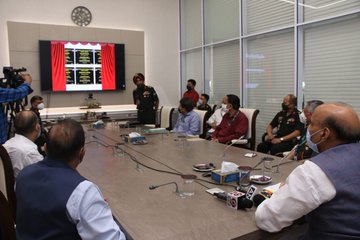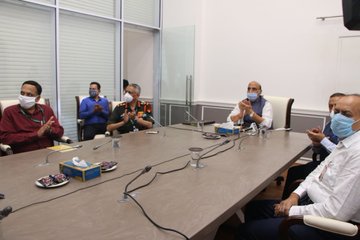
Air Marshal Suresh Chand was the first person from Himachal Pradesh to rise to the post of Air Marshal in the Indian Air Force. He was born to a lawyer’s family in the small village of Nurpur in Kangra district. After schooling, he joined the Delhi College of Engineering. He chanced upon an advertisement inviting applications for commission into the Air Force. He applied and was selected. This was his true vocation — he slipped into the cockpit like a fish takes to water.
Despite the fact that his marital life was not happy, and he had to look after two young sons — one of whom was suffering from haemophilia — he never let these personal problems come in the line of duty or mar his professional career. He took command of the Para Trooper Training School in 1971 and trained a large number of paratroopers. He was awarded the Vayu Sena Medal in 1975, and it was recorded that his training went a long way towards the success of an air-borne assault during the Indo-Pak War of 1971.
He held various strategic posts. During the Indian Peace-Keeping Force (IPKF) operations in Sri Lanka, he played a pivotal role which helped the Army get logistics support from the Air Force. In recognition of his services, he was awarded the Ati Vishisht Seva Medal in 1987 for his inspiring leadership for improving the quality of flying training and in ensuring that the bases under his command achieved their flying task and the aircraft maintenance was of the highest level. He was the first non-fighter pilot to be appointed AOC-in-C — the post he retired from in 1991.
After retiring, he quietly slipped into a life with few perks. He enjoyed the rubbers of bridge and rounds of golf, and kept an active social life. Unfortunately, he was diagnosed with cancer about six months back and accepted it stoically. He decided not to go in for aggressive treatment, saying, ‘I have lived life on my own terms and will end it on my terms.’ He continued going to the club and playing bridge, and meeting his friends.
Then Covid-19 struck. His sons, who were abroad, could not come to meet him. He could not go anywhere. He was lonely. Though physically weak, he never lost his sense of humour. He enjoyed talking about the past, especially his years in the Air Force.
He did not like anybody talking about his illness. Till the end, he fought like a soldier, bore the pain without complaint and lived his life with dignity. Such a braveheart!
In normal times, there would have been hundreds at his funeral, but now, there were only a few members of the family. The Air Force presented a befitting, though much scaled down, farewell to one of its warriors.
A life well lived, and a fighter to the end. That is how I will remember him.











































































